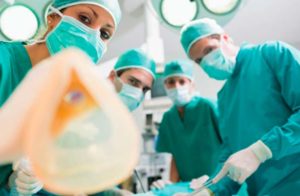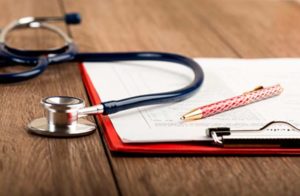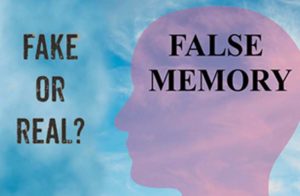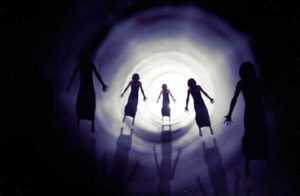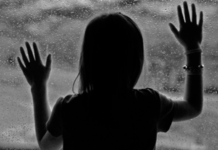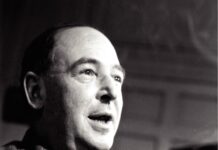Solving the Near-Death Experience mystery: false memories or genuine glimpse of another world?
Assessing the evidence from clinical cases
Can principles used in medical negligence cases prove the ‘life after death’ experiences are real?
Experiences and memories recalled by medical patients who report visions of seeing another world – a ‘glimpse of the afterlife’ – are a puzzle for modern medicine and psychical research
Such memories may be recalled by people who have survived severe bodily trauma or who have been resuscitated from the point of death.
Known as ‘Near Death Experiences’ (NDEs) they suggest that consciousness can persist even under physiological conditions where the heart and brain have ceased to function.
Vital functions seem to have shut down yet some – though not all – patients who are resuscitated report visions and sensations of consciousness.
Such cases have been reported across cultures for centuries and have often been given a religious, spiritual or psychical interpretation and are treated by some as evidence for life after death.
Many NDErs report how dramatically lucid their experiences are, in situations where it would ordinarily be expected cognitive functioning to be, at the very least, diminished rather than enhanced.
Against such ideas many sceptics suggest that NDEs are due to oxygen deprivation and physiological stress causing hallucinations and dreams which take on the reality of truth. The memories are false, a product of the brain during anaesthesia.
How could one determine whether such experiences may been veridical and correspond to a greater objective reality?
One problem is our understanding of the brain and how it functions are still limited, the position that remains much the same as was stated in 1998 ‘we do not even know what physiological conditions are minimally required for organized, vivid cognition’.
Legal precedents
In this context, legal principles used to establish the reality of experiences in cases of medical negligence or offences suffered by persons undergoing operations may be applicable.
Judging memories in a clinical context
In Jacobs v Great Yarmouth and Waveney Health Authority [1984] Lexis Citation 1733 The plaintiff Mrs Jacobs claimed for damages as a result of the negligent administration of an anaesthetic when she underwent an operation for hysterectomy.
The claimant – referred to as plaintiff in those days – stated she had been conscious and aware of the operative procedures right up to the moment of the first surgical incision for the operation itself. It was submitted that consequently she underwent the terrifying experience of believing that the surgeon intended to operate upon her and remove her womb while she was conscious and aware of what he was about to do, although because of the paralysing effect of pre-op muscle relaxant she was wholly unable to communicate. She stated her nervous system had been gravely affected, the result having not yet worn off.
The defence that was developed was that the anaesthetist had not made the error attributed to him by the plaintiff and that the plaintiff had mistakenly transposed in her mind experiences of which she had become aware as she recovered from the anaesthetic after the operation. In short it was all a bad dream.
On appeal, the Griffiths LJ held that the trial judge was entitled to make such a finding that
“ in my view there was ample material in the evidence of the medical witnesses to support the view that a person’s memory, after having received a great deal of various forms of drugs for the purpose of the operation, would be likely to be unreliable; I would have thought that that would be reinforced by commonsense.”
However, regarding her post-operation memory the judge considered that although these had ‘the ring of truth’ it was possible that the sequence of events had become confused and was honest, it also seemed improbable that so many errors as were alleged had occurred on one occasion.
As a result the claim failed. The question here was legal liability was their evidence of negligence on the facts but it addressed the question of testimony and memory. Ultimately, memory alone – and a partial one could not be relied upon in a single case. Although the recollections of Mrs Jacobs seemed real, it was not possible, on the balance of probabilities, to conclude the they had occurred as she recalled. In short, it could not be proved that the memories false in being the product of a hallucination or mental occasion caused by anaesthetic.
So, do all memories reported in a clinical context fail as proof?
So does this mean that all witnesses with memories of NDEs during operations could similarly be dismissed ?
Can they all be dismissed as false memory or hallucination or faulty recall?
Clearly with an individual case there is an evidential problem, although each case will turn on its facts, but it is not insurmountable.
Of course, as a matter of logic the only way we can determine some memories as false is because some memories are accurate and true.
However, whilst an individual memory or recollection may not reach the standard of being evidential or probative, a collection of similar memories on the part of separate witness can do.
This is suggested by the approach to evidence in R v Nicholson [2012] EWCA Crim 1568 where a number of female patients alleged that they had been subjected to sexual assaults by a male nurse following surgical procedures and recovery from anaesthesia between 2007-2011.
The defendant that all the allegations arose from unwanted side effects of recovery from anaesthesia and false memory.
It was advanced that false memories may have been created by (1) hallucinations while awake, (2) dreaming while asleep or (3) misperception of an ‘innocent’ experience.
Expert evidence was given to the court by medical practitioners who were specialists in anaesthesia and its effects on the quality of the memories recalled by the complainants. They considered false memories in such circumstances were rare.
The jury heard all the evidence, with judge giving a direction that the testimony of each complainant could be considered together. A factor was the likelihood or unlikelihood of there being a coincidence in several women suffering false memory of sexual interference all in same hospital and in similar circumstances.
The accused was convicted, it being held that the evidence from different patients supported each other as to his guilt.
The Court of Appeal upheld the conviction. But the Court accepted that the nature of the evidence was such that no statistical evaluation could realistically be attempted, not least because the precise circumstances of the complainants were not replicated in the research papers to which experts had referred.
jury were entitled to consider the unlikelihood of the coincidence that four women had suffered false memory of sexual interference in the same hospital in similar circumstances, in the case of three of them during June – September 2008, and in the case of the fourth, during May 2006.
The Court took a similar approach to the similarities in the case of Norris [2009] EWCA Crim 2697, a murder and attempted murder case involving the deaths of four patients from insulin injections. The Court accepted “severe hypoglycaemia in non-diabetics was a very rare occurrence… [To] have five such cases, where four had led to the death of the patient, was quite extraordinary … [S]imilar patterns in each case made the five cases mutually supportive”.
This a long standing principle of evidence law, which could be adopted in the context of psychical research.[1]
Similar fact evidence and NDEs
This approach to evidence adopted in cases of clinical negligence and homicides may have application for the study of NDES.
If proof of memories harm and cases of actual death occurring in a clinical setting can be deemed convincing, then a case can be made for accepting NDEs as genuine.
Of course, courts are not testing laboratories or places to rebutting scientific models. Courts cannot rule upon the existence of an afterlife, or the validity of any other hypothesis, one way or another.
However, a judicial approach to the accumulated evidence can focus on striking similarities between reported experiences, recorded many years apart, so as to negate the concept of a false memory or a mere hallucination as explanations.
This aspect has been considered in an article in Medical News Today in 2017 calling for more research, where the view was expressed:
“While near-death experiences may have a universal character so that they may exhibit enough common features to belong to the same phenomenon, we nevertheless observed a temporal variability within the distribution of reported features.”
As the article goes on to say:
With a phenomenon as little studied as NDEs, there are still many questions unanswered… testing any one theory in such a difficult-to-pin-down experience is a true challenge” . [2]
Negating the case for false memory or hallucination, strengthens the case for there being a potentially paranormal explanation to these experiences. Accordingly, researchers should be on the look out for patterns and similarities between individual cases. Whilst individually they may not be significant, taken collectively they may point to a the reality of there being such a thing as a genuine NDE, indicative of a survival of consciousness in a way not explainable by current scientific models.
Murdie, Alan (2015) ‘Extraordinary Evidence versus Similar Fact Evidence: Proving the Occurrence of Psi Outside the Laboratory’ – paper to the International Conference for the Society for Psychical Research and the Parapsychology Association, July 2015, Greenwich, London. Newman, Tim, (2017)’ Is the Near-Death Experience the same for everyone? in Medical News Today 29 July 2019 https://www.medicalnewstoday.com/articles/318687.php



